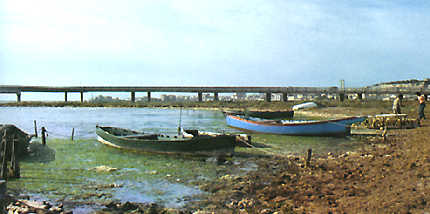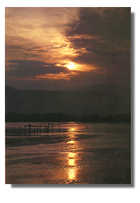
S. Gilla is about 8.000 acres of water that blocks the spread of the city. S. Gilla
is separated from the sea by the La Plaia sand bank.
S. Gilla was, for centuries, the habitat of many species of birds. Many species still
inhabit S. Gilla.
S. Gilla is home to some migratory and nesting birds such as Sea Crows, Coots, Avocets,
Purple Gallinules and Stilt Plovers. But the most extraordinary species are colonies
of pink Flamingos, which divided their time between the ponds of S.Gilla and Molentargius.
It is easy to find Flamingos near the road side, often only ten meters from the road.
The road, which crosses the lagoon, is only one example of how this wet land has been
violated. In fact, starting just after the war, many chemical plants were built in
this area. This industrialization and the consequent commercial development, resulted
in the need to construct a canal and harbor. However the proposed building of this
canal and harbor aroused the ecological awareness of the people of Cagliari and caused
a long controversy that was settled only at the beginning of the 1980s. There is
a project to create around the margins of the industrial harbor (which is still under construction)
a bird sanctuary and to install a water purification plant for the area of Machiareddu.
The environmental degradation, which had reached an alarming level, has been partially arrested and
S. Gilla has been opened again to commercial fishing.
The allure of S. Gilla is not only the colonies of birds or the unbelievably beautiful
sunset on the water. 3 kilometers from Cagliari on the road to Pula, there is "sa
illetta" ("little villa" in the Sardinian language), which used to be a very small
island in the middle of the Molentargius pond. Nowadays it is no longer an island. It
now boarders the road to Pula. There is a chapel pending restoration on "sa illetta".
The facade of the chapel which is dedicated to S. Simon, has a gothic portal above
which there is a fresco lunette with a effigy of S. Simon in the act of benediction. Inside
the church, there is a semicircular apse, a barrel vault and cross arches. There
is also an altar, a tabernacle portraying the glory of the angels cheering the Eucharist and a painting by Felice Marini.
|







